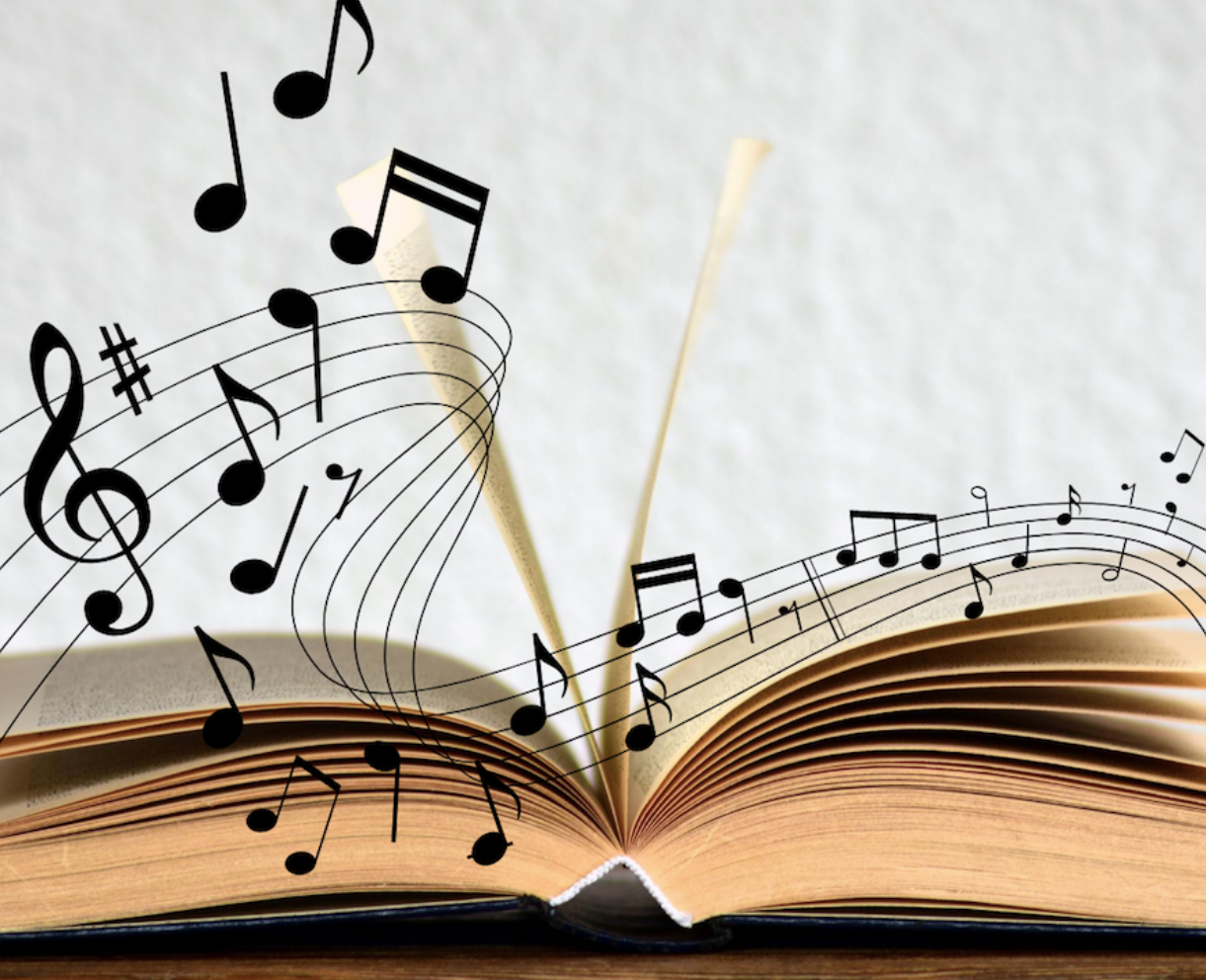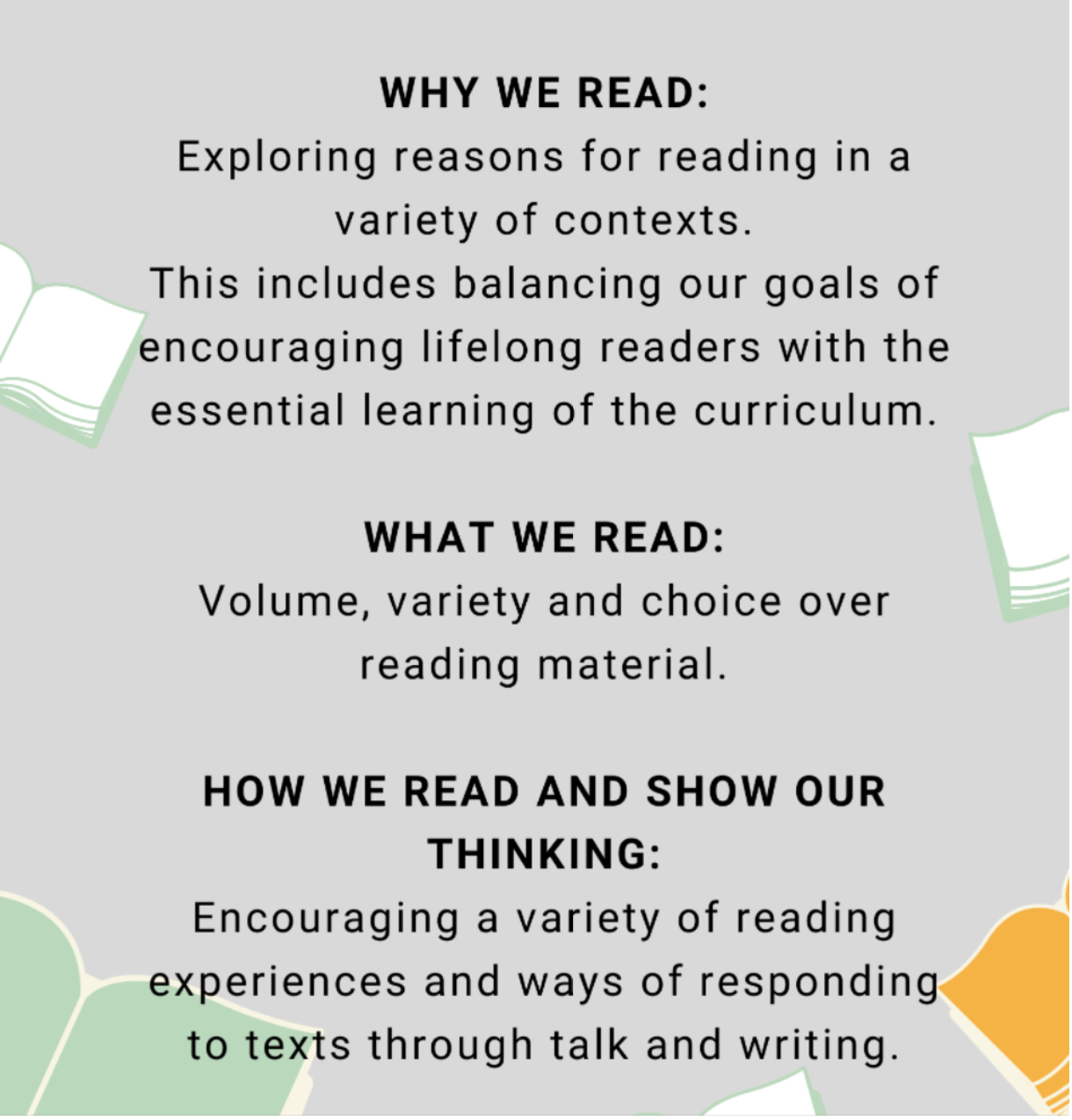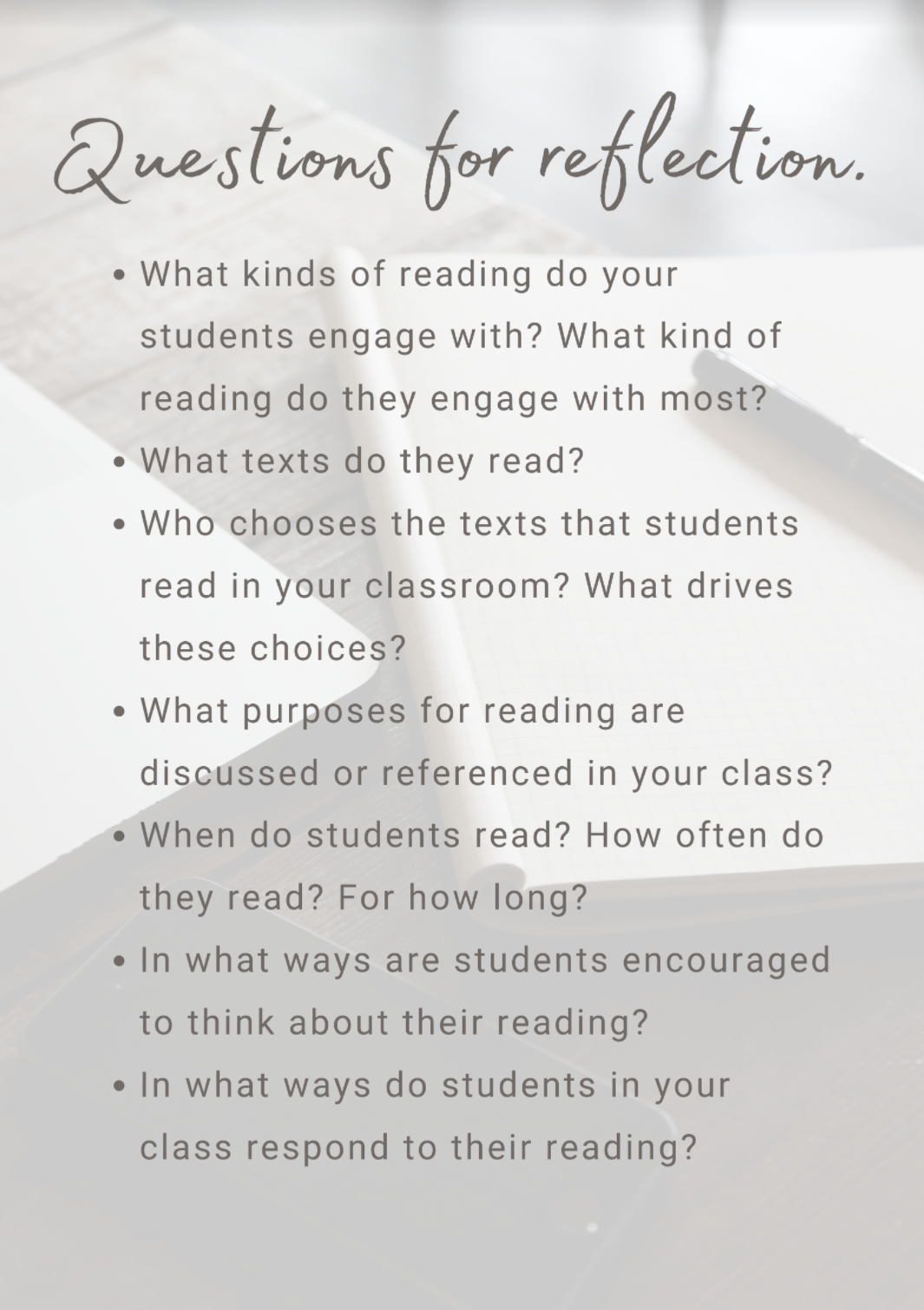Designing Rich Reading Experiences: Reading in the Lower-Mid Secondary Years
Questions and Considerations
When you listen to a great piece of music, what are you hearing?
When we hear a great song we can be struck by the strong impression it leaves behind. If someone were to ask us about our reaction to the music, we might be able to point out a particular lyric, haunting melody, or even a moment like the chorus that resonates. But in reality, it’s a pleasing combination of all of these things along with other music elements that create the meaningful experience that makes us go, “Wow!”
Just like one element such as pitch or melody does not create a harmonious, well-rounded song on its own, a single approach to reading in the classroom – such as a sole focus on class novels — cannot create well-rounded reading experiences for our students that are meaningful to them and are likely to stick. Research has shown that increasing the range and variety of texts increases reading competencies, and that when students interact with a range of engaging reading materials, substantial effects on comprehension and motivation have been observed (Palincsar & Duke, 2004; Guthrie & Humenick, 2004; Biancarosa & Snow, 2006). Even the aims of English as a subject, as referenced by the Australian Curriculum, explicitly identify that students should learn to read “increasingly complex”, “written and multimodal texts across a growing range of contexts”, build “interest and skills in inquiring into the aesthetic aspects of texts” and develop an “informed appreciation of literature.”
So what does this mean when it comes to approaching reading in lower and intermediate secondary English classrooms? To quote the Reading Next report, “In the medical profession, treatment needs to be tailored to an individual patient’s needs; at times, more than one intervention is needed to effectively treat a patient. Similarly, educators need to test mixes of intervention elements to find the ones that work best for students with different needs” (Biancarosa & Snow, 2006: 12). With this in mind, we might want to consider the following:
If there’s anything that the 2020 ‘pivot’ (or unceremonious ‘shove!’) to remote learning has revealed, it is that we are able to adapt our approaches and assessment of student learning in ways we hadn’t imagined before. As we focus engaging (and re-engaging) students in a variety of different learning formats and contexts, it’s a great time to rethink how we can best design rich and diverse reading experiences for them that encourage thoughtful, critical and connected reading.
In this blog series, we will explore ways that we can strategically incorporate different approaches to reading that create meaningful experiences for lower to intermediate secondary readers. In the meantime, check out some possible questions for reflection below:
By Judy Douglas and Nicole Marie
References:
Biancarosa, C., & Snow, C. E. (2006). Reading next—A vision for action and research in middle and high school literacy:A report to Carnegie Corporation of New York (2nd ed.). Washington, DC: Alliance for Excellent Education.
Guthrie, J.T., & Humenick, N. M. (2004). Motivating students to read: Evidence for classroom practices that increase reading motivation and achievement. In P. McCardle & V. Chhabra (Eds.), The voice of evidence in reading research (pp. 329–54). Baltimore, MD: Brookes.
Palincsar, A. S., & Duke, N. K. (2004). The Role of Text and Text-Reader Interactions in Young Children's Reading Development and Achievement. The Elementary School Journal, 105(2), 183–197.


